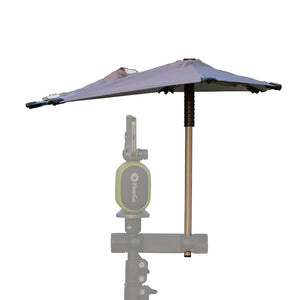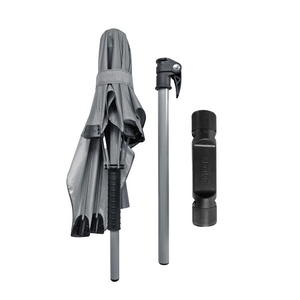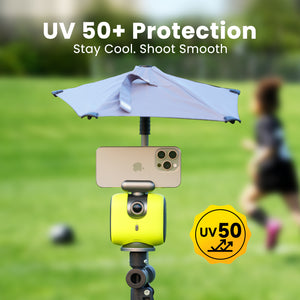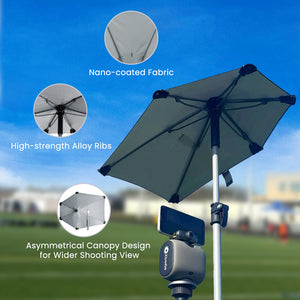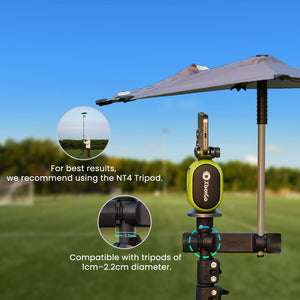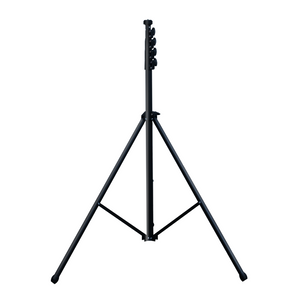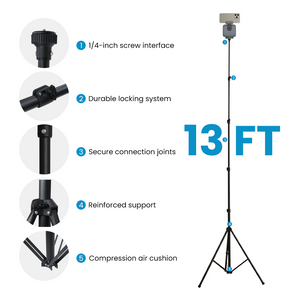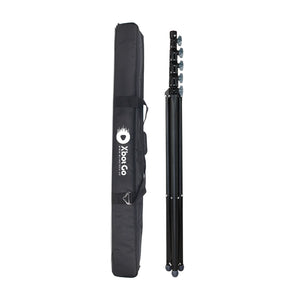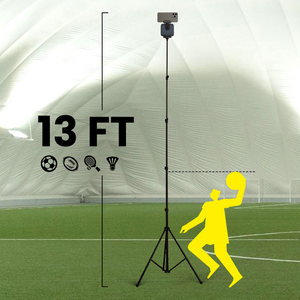XbotGo Chameleon AI Sports Camera
How to Find Your Hockey Skate Size: The Complete Guide
Let me guess - you're standing in a hockey shop, staring at walls of skates, and the salesperson just told you to go "1.5 sizes down from your shoe size." If that advice feels off, trust your instincts. After two decades of playing and coaching hockey, I've watched countless players struggle with ill-fitting skates because they followed outdated sizing rules. Today, I'm sharing what actually works.
The Quick Answer You're Looking For
Your hockey skates should be 2-3 sizes smaller than your street shoes (not the 1.5 everyone keeps repeating). For women, that's often 3-3.5 sizes smaller. Your toes should barely brush the toe cap when standing, and your heel shouldn't budge when you walk. Width matters just as much as length - get both right or prepare for a world of hurt.
Now, let's dive into why this matters and exactly how to nail your perfect fit.
Why That Old "1.5 Sizes Down" Rule Could Be Sabotaging Your Game
Here's something that might shock you: according to professional equipment managers and players who've gone down the sizing rabbit hole, most recreational players wear skates that are at least one full size too big. I've seen beer league heroes transform their game simply by dropping a size or two.
Think about it - when your foot slides around inside your skate, even just a millimeter, you're losing precious power transfer. Every stride becomes less efficient. Your ankles work overtime to compensate for the instability. Those mysterious "weak ankles" you think you have? They might just be oversized skates.
The Two Methods That Actually Work (I Use Both)
Method 1: The Quick Conversion (Your Starting Point)
Forget what the sizing chart at the big box store says. Here's what works in the real world:
For Adults:
- Men: Go 2-3 sizes down from your street shoe size
- Women: Go 3-3.5 sizes down from your street shoe size
- Use your dress shoe size as reference (it's more accurate than sneakers)
For Kids:
- Junior/Youth: 1.5-2 sizes down maximum
- Yes, they're growing, but oversized skates will hurt their development more than buying new ones sooner
I wear a size 11 shoe and rock an 8.5 skate. My buddy wears the same shoe size but squeezes into 8s. We're both comfortable because we understood that width matters too (more on that in a minute).
Method 2: The Pro-Level Measurement Technique
This is what I do when helping teammates find their perfect fit. You'll need:
- Paper bigger than your foot
- A wall
- Pen or pencil (keep it perpendicular!)
- Measuring tape
- Your actual hockey socks (not thick winter socks)
Here's the process:
- Set up against a wall - Paper on hard floor, heel against the wall
- Stand naturally - Full weight on the foot, just like you would in skates
- Trace carefully - Keep that pen straight up and down (angled = wrong measurements)
- Measure in centimeters - From the wall to your longest toe
- Measure the width - Across the widest part of your forefoot
- Do both feet - Use the larger one for sizing
Now comes the magic...
The Width Ratio Secret That Changed Everything
This is where most players go wrong. They focus on length and ignore width, then wonder why their feet go numb or they get wicked blisters.
Calculate your width ratio:
Foot Length (cm) ÷ Foot Width (cm) = Your Width Ratio
What your ratio means:
- Below 2.5 = You need wide/high volume skates (EE width)
- 2.5 to 3.0 = Standard width works for you (D width)
- Above 3.0 = You need narrow/low volume skates (C width)
I learned this the hard way after years of cramming my wide feet into standard width skates. Once I switched to EE width, it was like discovering skating all over again.
Decoding the Brand Maze (Without the Marketing Fluff)
Let me break down what actually matters with today's major brands:
Bauer's Fit System
Bauer simplified things with their Fit 1, 2, and 3 system:
- Fit 1: Narrow feet, low volume (think ballerina feet)
- Fit 2: Average everything (fits most people)
- Fit 3: Wide feet, high volume (my people!)
Their skate lines still have personalities though:
- Vapor: Naturally narrow and tapered (speed demons love these)
- Supreme: Medium fit with great heel lock (power players' choice)
CCM's Approach
CCM keeps it straightforward:
- Tapered: Narrow all around
- Regular: Standard fit
- Wide: Exactly what it sounds like
Their families:
- Jetspeed: Built for agility (narrower fit)
- Tacks: All-around performance (medium-wide)
- Ribcor: Comfort first (flexible and forgiving)
The Fit Tests That Don't Lie
Forget fancy scanners for a minute. These old-school tests tell you everything:
The Heel Lock Test (Most Important)
- Lace up like you're about to play
- Walk around the store
- Your heel should be locked down like it owes you money
- Any lift = too big, period
The Toe Test
Standing straight: Toes barely kiss the front
In hockey stance: Toes pull back slightly
If you have to stretch to feel the end, they're too big
The Pencil Test (From the Pros)
Fully laced up, try to slide a pencil behind your heel. If it fits easily, your skates are too big. A snug fit means the pencil barely squeezes in or doesn't fit at all.
Real-World Fitting Strategies
The Cross-Shopping Technique
Here's a pro move: if you're between volume categories, play with widths across different models. I have a teammate who's right on the line between medium and high volume. He tried:
- Bauer Supreme Fit 2 in EE width
- CCM Tacks in regular width
- Bauer Vapor Fit 2 in EE width
The Vapor in EE ended up being perfect - narrow boot with extra width gave him the best of both worlds.
Heat Molding: Your Secret Weapon
Most mid-level and up skates can be heat molded. The shop heats them to about 175°F, you put them on, lace up, and sit still while they cool. It's like getting semi-custom skates for free.
Just don't try this at home with your oven. I've seen the disasters.
Age-Specific Real Talk
For Hockey Parents
I get it - skates are expensive and kids grow fast. But here's the truth: oversized skates will hurt their development more than the cost of replacing them sooner. Stick to 1.5 sizes down maximum, maybe allow a half-size extra for growth.
Watch for these signs it's time to size up:
- Toes are crunched even in skating position
- Complaints of foot pain after games
- Sudden decrease in skating performance
For Adult Players
We're done growing (hopefully), so go for performance fit. I've seen 40-year-old beer leaguers drop two skate sizes and suddenly skate like they're 25 again. Don't let anyone tell you comfort means loose - proper fit means no foot movement inside the boot.
Troubleshooting Common Fit Issues
"My feet go numb"
- Usually too narrow or over-tightened laces
- Try EE width or adjust lacing pattern
"I get blisters on my heels"
- Classic sign of heel lift
- Go down a half size or add heel lock lacing
"One foot is bigger than the other"
- Size for the larger foot
- Add a thinner insole to the smaller foot's skate
"The sides of my feet hurt"
- Width issue, not length
- Time to try a wider fit
Your Action Plan
- Measure both feet using the method above
- Calculate your width ratio to understand your volume needs
- Try on at least 3 different models in your calculated size
- Do all the fit tests - heel lock, toe touch, pencil test
- Consider heat molding for the final perfect fit
- Skate in them - most shops let you test and return if they don't work
The Bottom Line
Your skates should feel like an extension of your feet - locked in heel, barely-there toe touch, no side pressure, and zero movement inside the boot. Yes, it might mean going smaller than feels "normal" coming from street shoes. Yes, proper fit might feel weird at first if you've been wearing boats on your feet.
But here's what I promise: nail your skate fit, and you'll wonder why you waited so long. Your skating will improve, your feet will thank you, and you might just find yourself keeping up with those young guns who've been making you look bad at pickup.
Remember, there's no prize for suffering through ill-fitting skates. Take the time, do it right, and get ready to rediscover your love for the game. Because when your skates fit perfectly, every stride feels effortless, every turn feels sharp, and the game becomes fun again.
Now get out there and find your perfect fit. Your feet (and your teammates) will thank you.
XbotGo Chameleon AI Sports Camera
Capture every moment with AI-powered tracking. Perfect for coaches, parents, and athletes who want seamless footage without manual filming.







 Soccer
Soccer Basketball
Basketball Ice Hockey
Ice Hockey Rugby
Rugby










